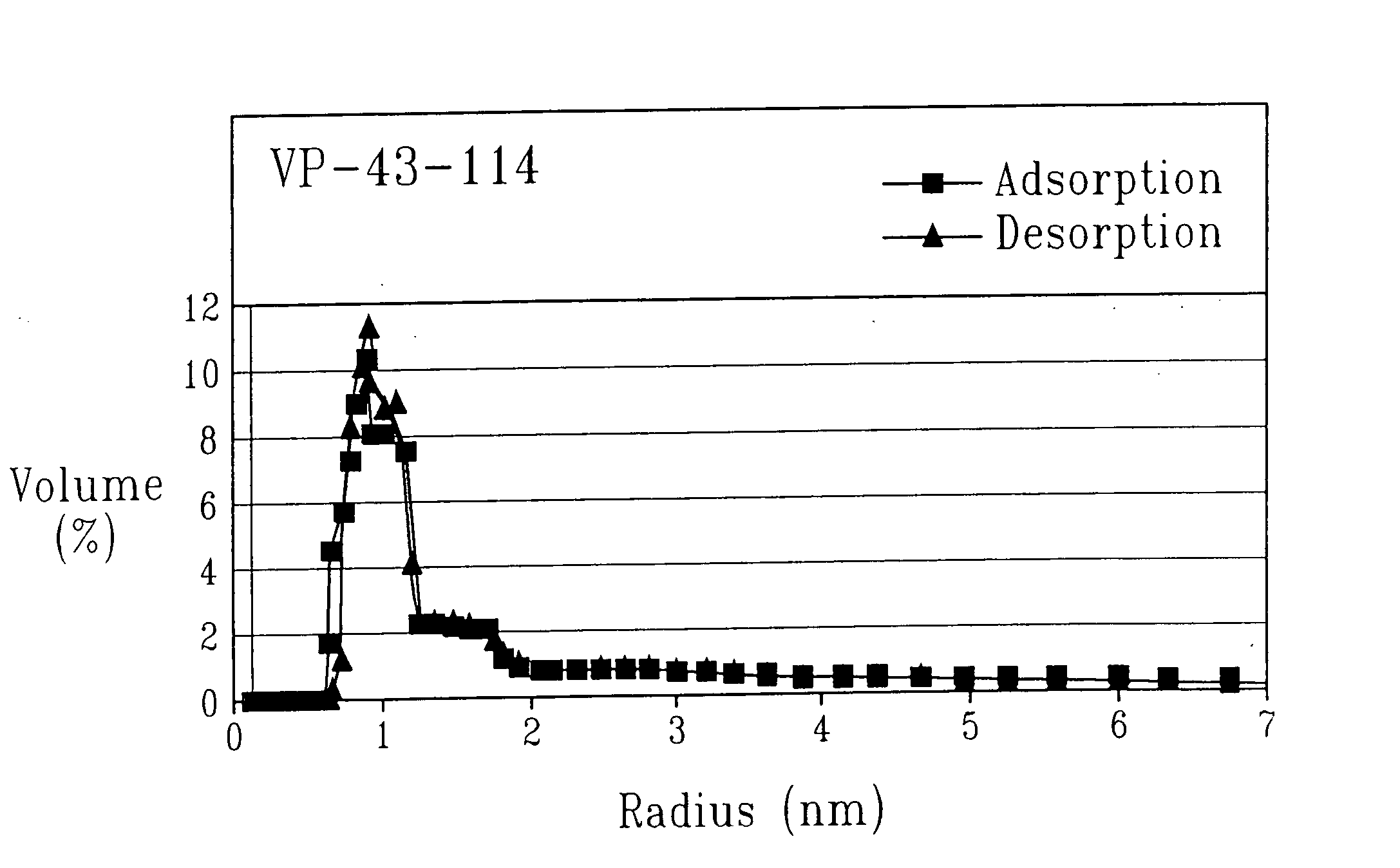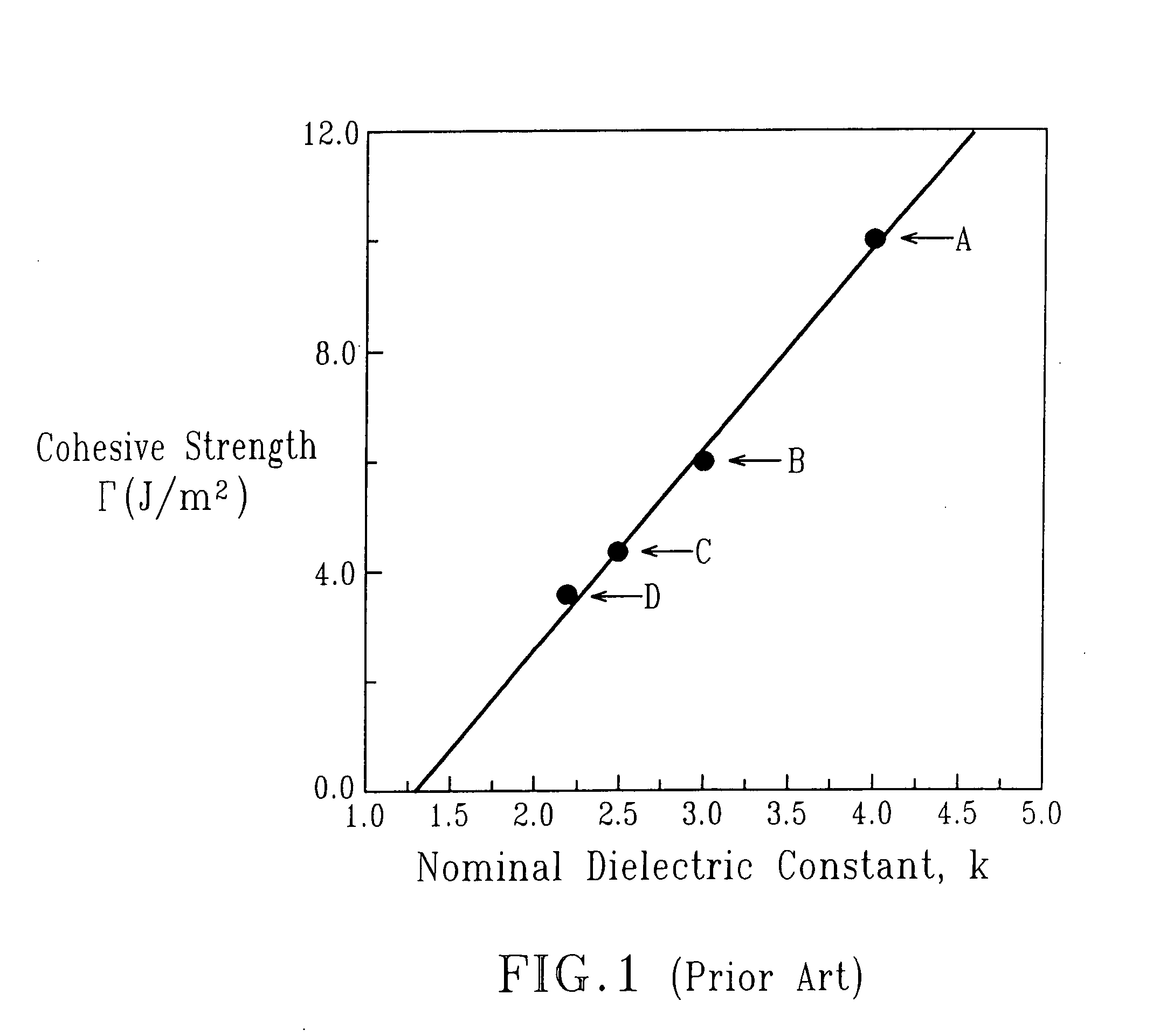SiCOH dielectric
a dielectric and silicon technology, applied in the field of silicon dielectrics, can solve the problems of degrading the properties of silicon dielectrics, increasing signal delays in ulsi electronic devices, and reducing the speed of integrated microprocessor circuits, so as to improve fracture toughness, improve cohesive strength, and reduce brittleness
- Summary
- Abstract
- Description
- Claims
- Application Information
AI Technical Summary
Benefits of technology
Problems solved by technology
Method used
Image
Examples
example 1
SiCOH Material A
[0063] In this example, an inventive SiCOH dielectric, referred to as SiCOH film A, was made in accordance with the present invention. In this example, MDES stands for methoxydiethylsilane and HXD stands for hexadiene. A substrate was placed on a substrate holder in the reactor. Gas or liquid precursors, comprising a single organosilicon precursor and a second bifunctional organic porogen, were introduced in a PECVD reactor. In one example this reactor was a parallel plate reactor, while in another example it was a high density plasma reactor. After the flow of the precursor and the pressure in the reactor had stabilized at a preset conditions, RF power was applied to one or both electrodes of the reactor to dissociate the precursor and deposit a film on the substrate. The deposited film contained a SiCOH phase and an interconnected organic phase called the porogen (derived from the organic molecule functionality). The film was subsequently exposed to a treatment st...
example 2
First Process Embodiment
[0064] For the growth of a porous SiCOH material with k less than 2.7 having a pore size distribution full width at half maximum of about 1 to 3 nm, and having enhanced Si—CH2—Si bridging methylene carbon, two precursors were used, specifically hexadiene and DEMS (diethoxymethylsilane). Within the invention, any alkoxysilane precursor may be used in place of DEMS, including but not limited to: OMCTS, TMCTS, VDEMS, or dimethyldmethoxysilane.
[0065] As is known in the art, gases such as O2 may be added, and He may be replaced by gases such as Ar, CO2, or another noble gas.
[0066] The conditions used include a DEMS flow of 2000 mg / m, a hexadiene flow of 100 to 1000 mg / m, and a He gas flow of 1000 sccm, said flows were stabilized to reach a reactor pressure of 6 Torr. The wafer chuck was set at 350° C., and the high frequency RF power of 470 W was applied to the showerhead, and the low frequency RF (LRF) power was 0 W so that no LRF was applied to the substrate....
PUM
| Property | Measurement | Unit |
|---|---|---|
| temperature | aaaaa | aaaaa |
| dielectric constant | aaaaa | aaaaa |
| diameter | aaaaa | aaaaa |
Abstract
Description
Claims
Application Information
 Login to View More
Login to View More - R&D
- Intellectual Property
- Life Sciences
- Materials
- Tech Scout
- Unparalleled Data Quality
- Higher Quality Content
- 60% Fewer Hallucinations
Browse by: Latest US Patents, China's latest patents, Technical Efficacy Thesaurus, Application Domain, Technology Topic, Popular Technical Reports.
© 2025 PatSnap. All rights reserved.Legal|Privacy policy|Modern Slavery Act Transparency Statement|Sitemap|About US| Contact US: help@patsnap.com



